FORT LEWIS, Wash. - To the 152 Soldiers in the 38th Long Range Surveillance Company, jumping out of an aircraft is just another day at the office. But the feeling isn't so routine to family members watching the 20 seconds creep by as their Soldiers jump out of planes and land safely on the ground.
"I am one of those wives who gets nervous on the top step of a ladder, so watching (my husband) tumble from an airplane just gives me the willies," said Christine Wear, the 38th LRS Co. family readiness group leader.
The company, part of the 201st Battlefield Surveillance Brigade, performed the airborne proficiency jump May 19 at Rogers Drop Zone. Family members looked on as Soldiers stepped out of C-23 Sherpa transport airplanes and CH-47 Chinook helicopters. According to Wear, wife of 1st Sgt. John Wear, about 30 family members and a few dogs braved the cold, wet weather to support their Soldiers.
This wasn't the first time the company made a jump accessible to family members. When the 38th returned from the Reconnaissance, Surveillance Leader Course at Fort Benning in April, families watched as approximately 60 company members parachuted into Fort Lewis.
"When family members are able to go out and see for themselves what it is their Soldiers do, they feel more connected to their Soldier, other family members and the Army," Wear said.
A handful of airborne units call Fort Lewis home, including the 1st Special Forces Group and the 2nd Battalion, 75th Ranger Regiment. According to Col. Robert Whalen, the 201st BfSB commander, the 38th LRS Co. is the only airborne unit under I Corps.
Whalen, who has performed approximately 100 static-line jumps and the same number of military free falls, stressed the importance of paying close attention to the jumpmaster's briefing.
"If you get hurt (jumping into) combat, it takes four guys to drag you off the drop zone," he said.
Although no Soldiers were hurt during the proficiency jump, Malynda Echols said her husband, Spc. Nathan Echols, landed with a few minor cuts on his neck.
The family jump gave Echols her first experience watching her husband at work.
"My kids have been wanting to see him jump," she said of Lilyanna, 7, and Nielani, 14 months.
Her husband parachuted in the second of eight 38th LRS Co. groups before weather intervened. Wind canceled the remaining passes over the drop zone.
Sergeant Brian Brazell, from the Washington National Guard's Detachment 2, A Company, 641st Aviation Battalion, said a jump can be postponed or canceled for a variety of reasons.
"We need a 500-foot ceiling above the aircraft," he said.
If the winds at the drop zone blow above 13 mph, it is considered unsafe. At 2 p.m. the wind gusted to 17 mph at Rogers DZ.
Jody Cullman flew in from Ohio for the weekend to watch her youngest son, Pfc. Wesley Cullman perform his 11th jump.
"I told him once he found out when the jump would be that (his father or I) would be here," she said.
Cullman arrived at Rogers DZ at 8 a.m. and stayed until the event concluded around 2:30 p.m. "He didn't get to jump, but I don't care, that's what I told him," Cullman said. "I said, 'I came to see you no matter what you're doing.' We're just a very proud family."
Kelly McGrath is a reporter with Fort Lewis' Northwest Guardian.
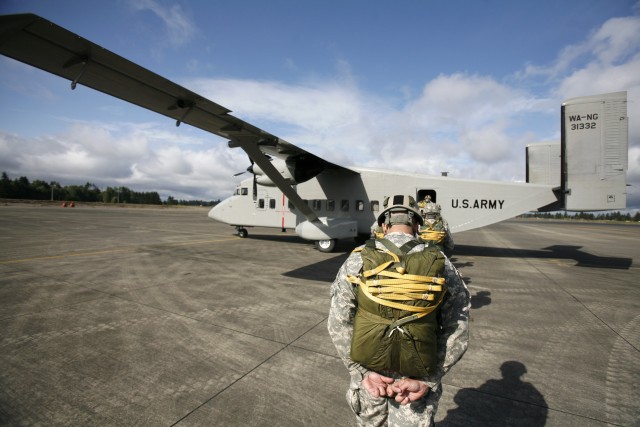
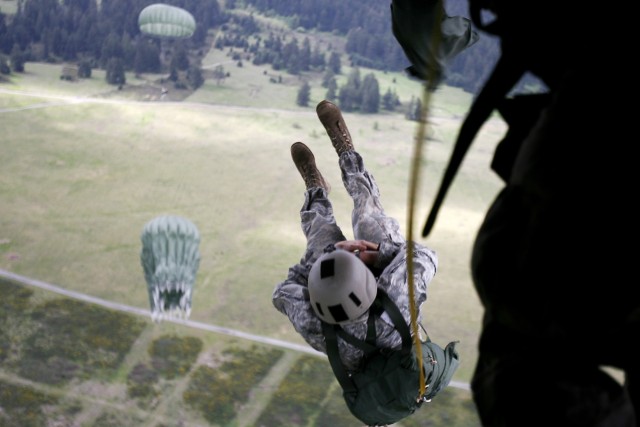
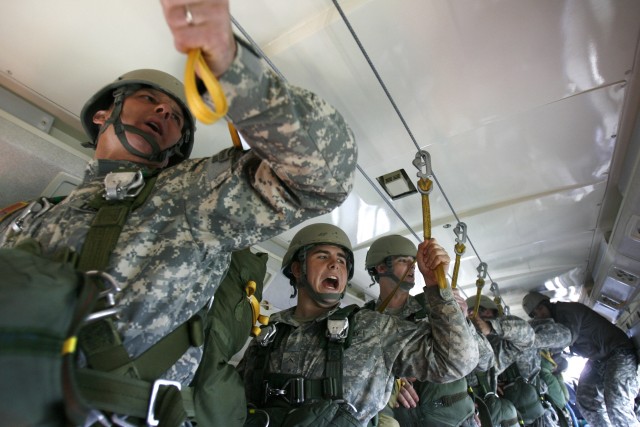
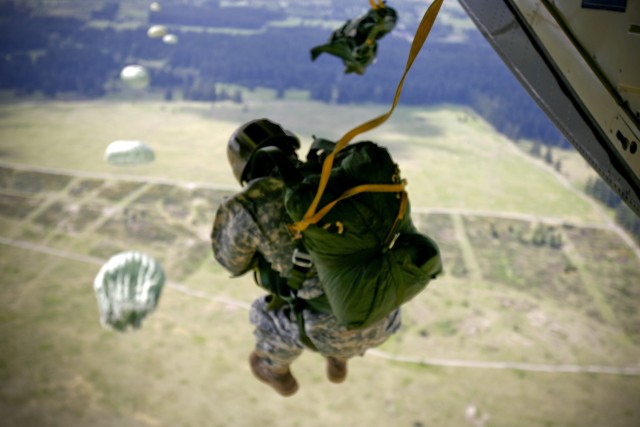
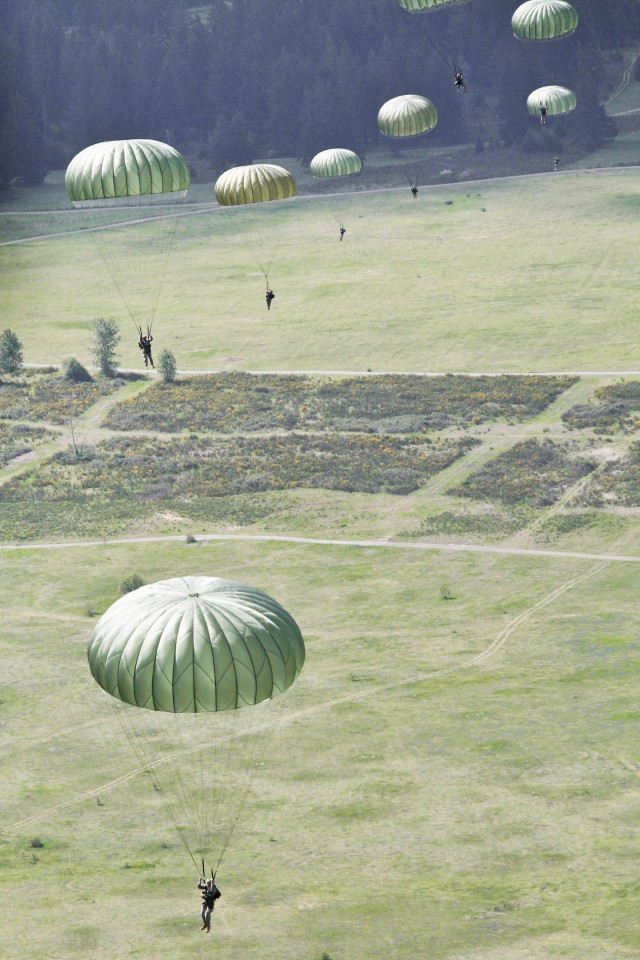
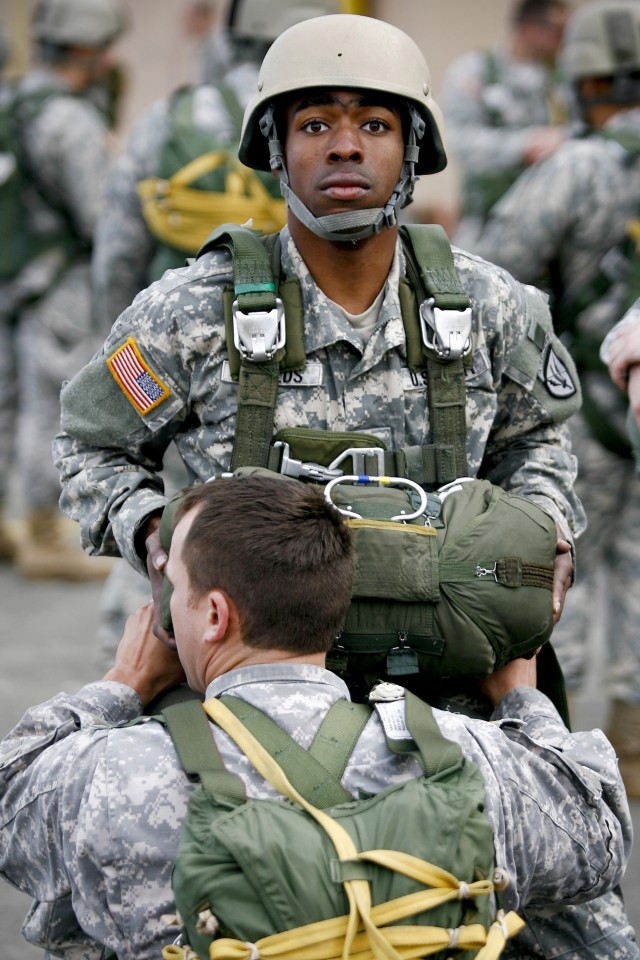
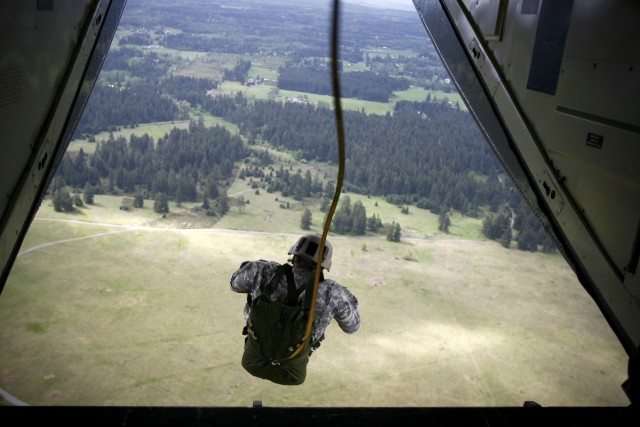
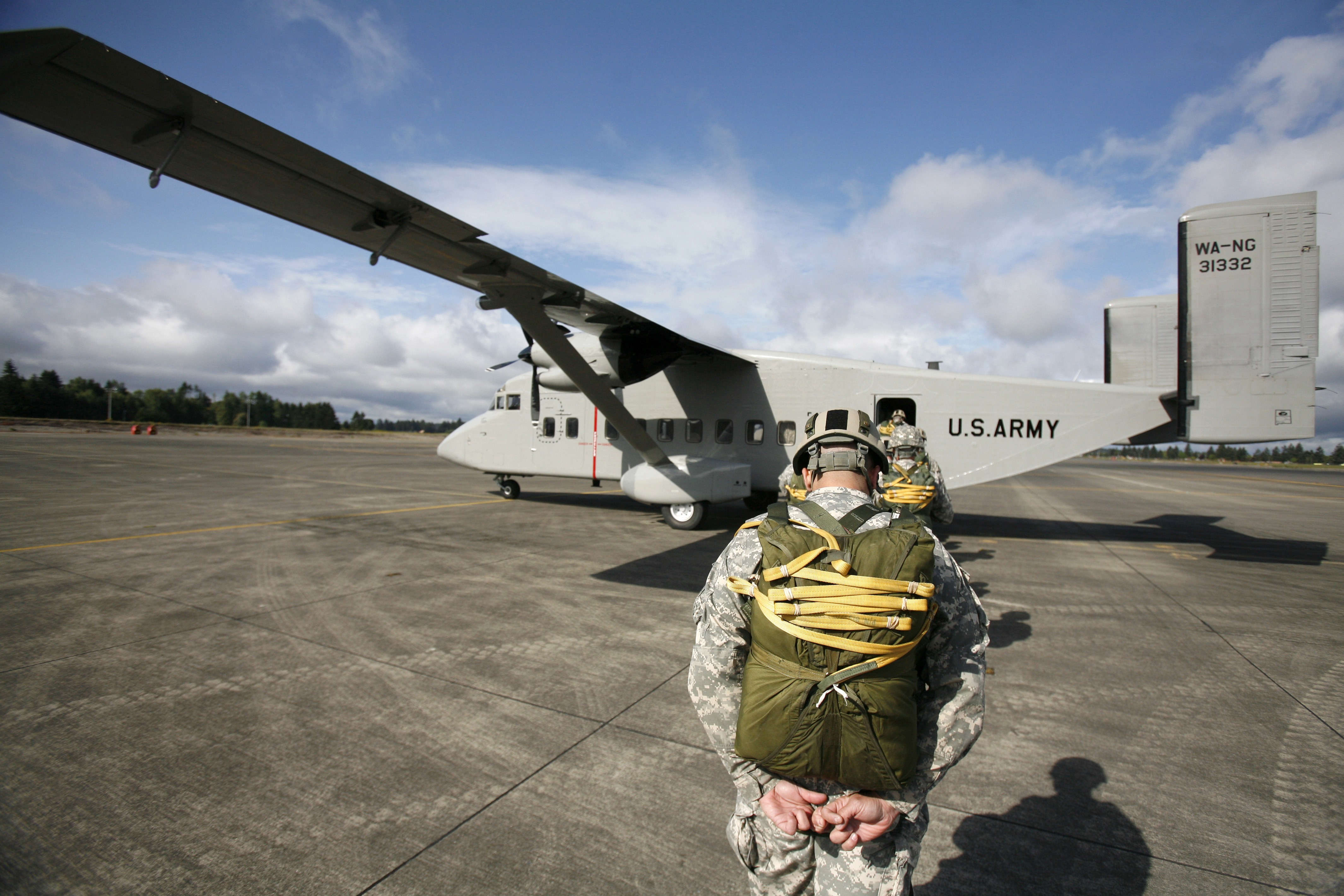
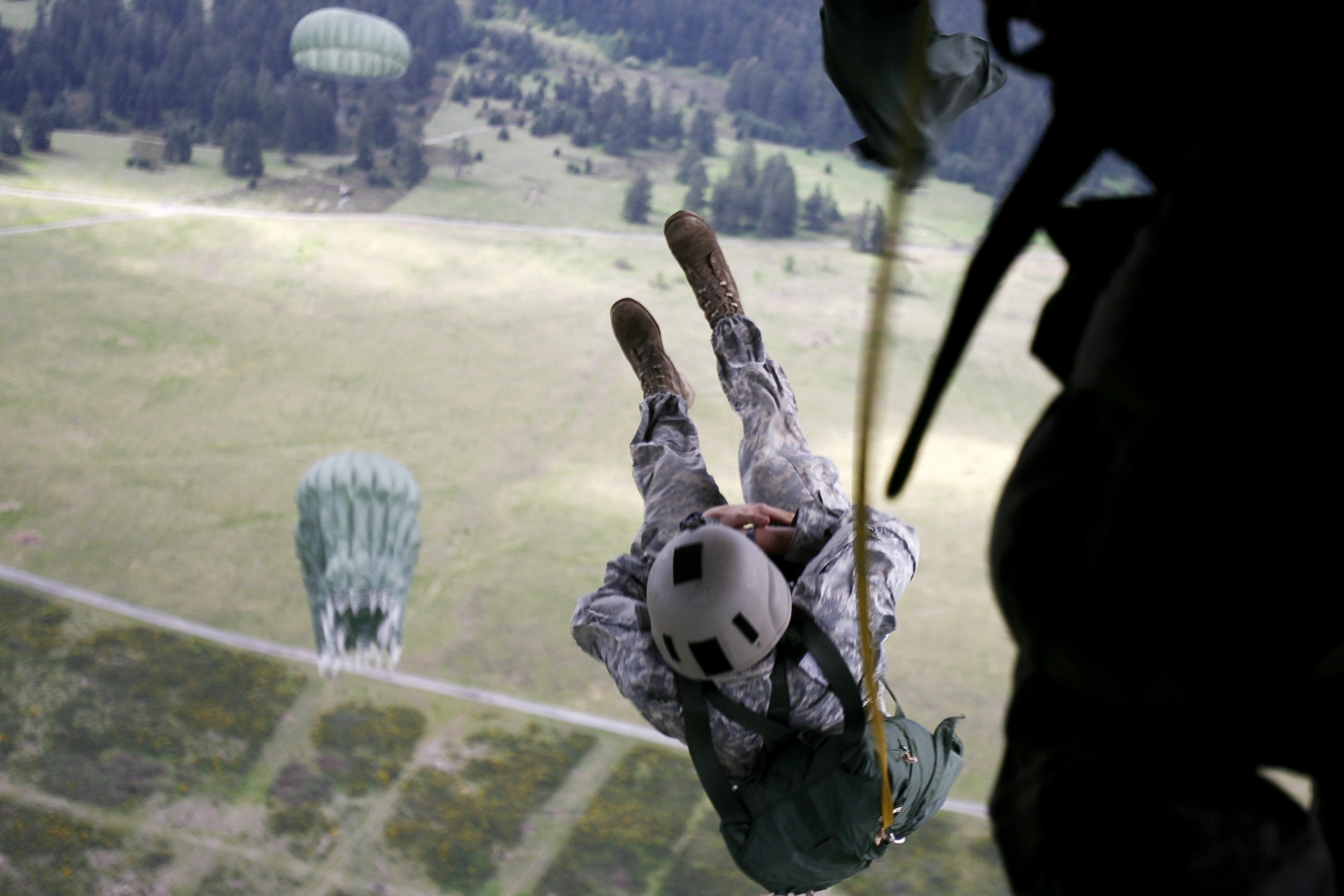
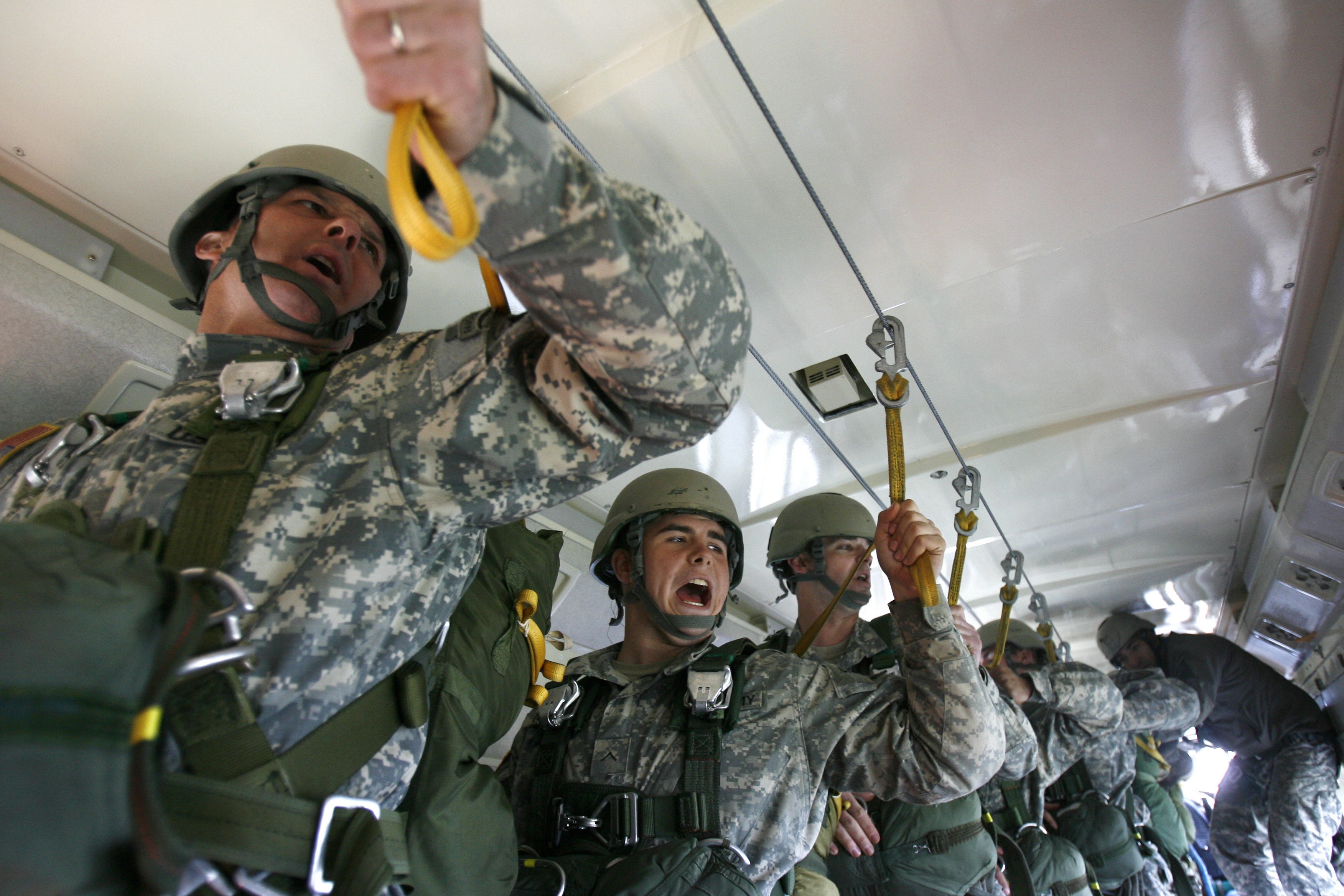
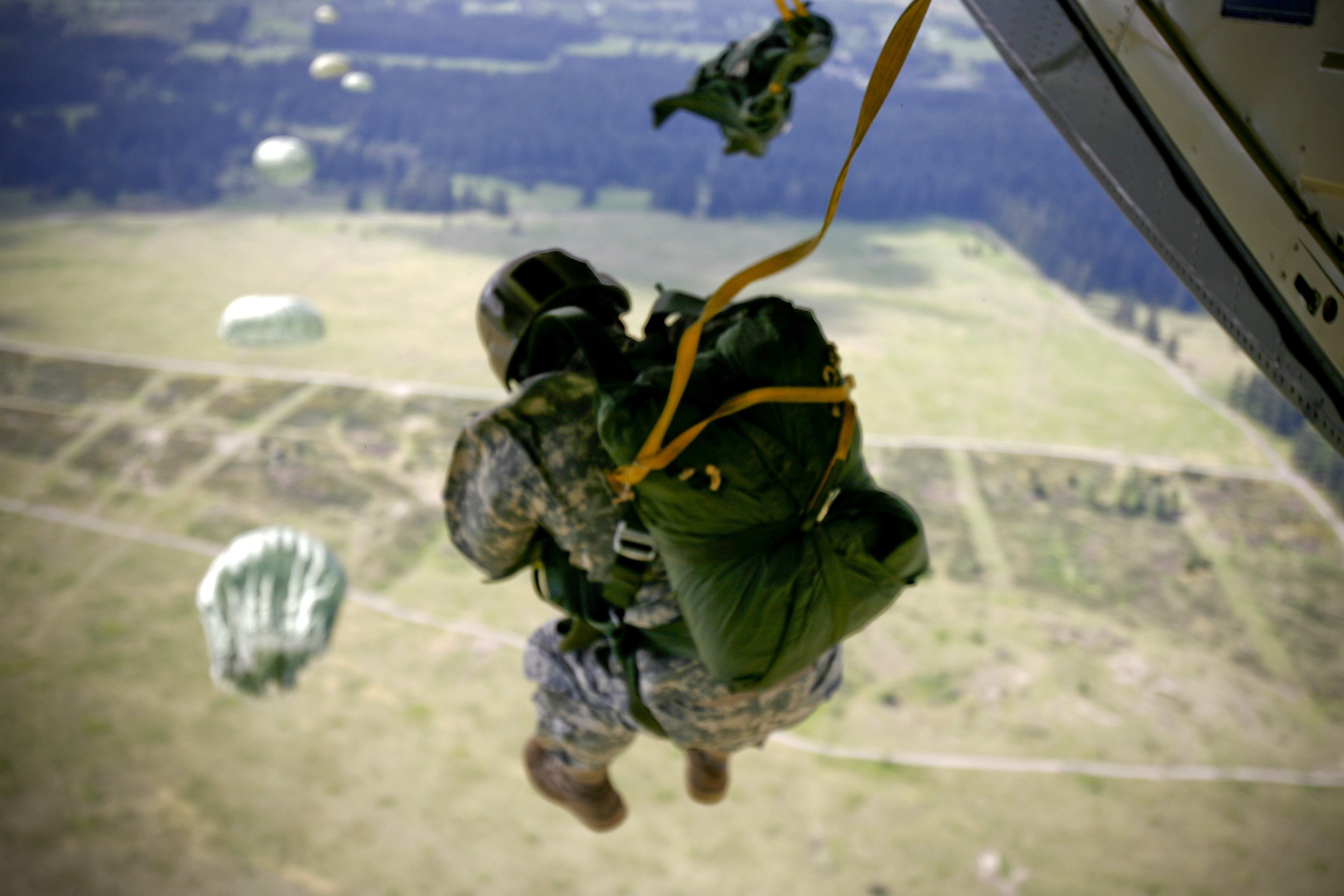
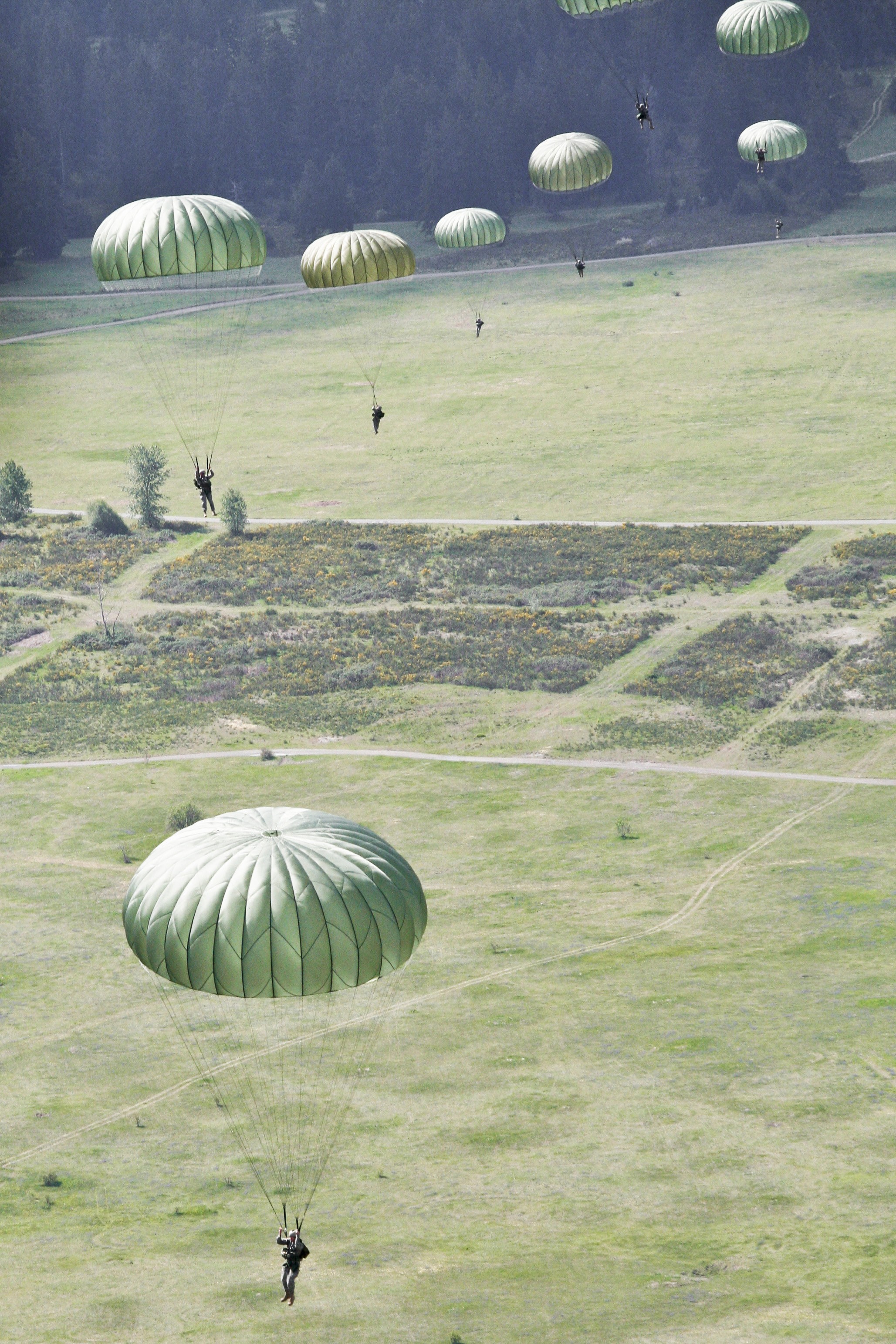
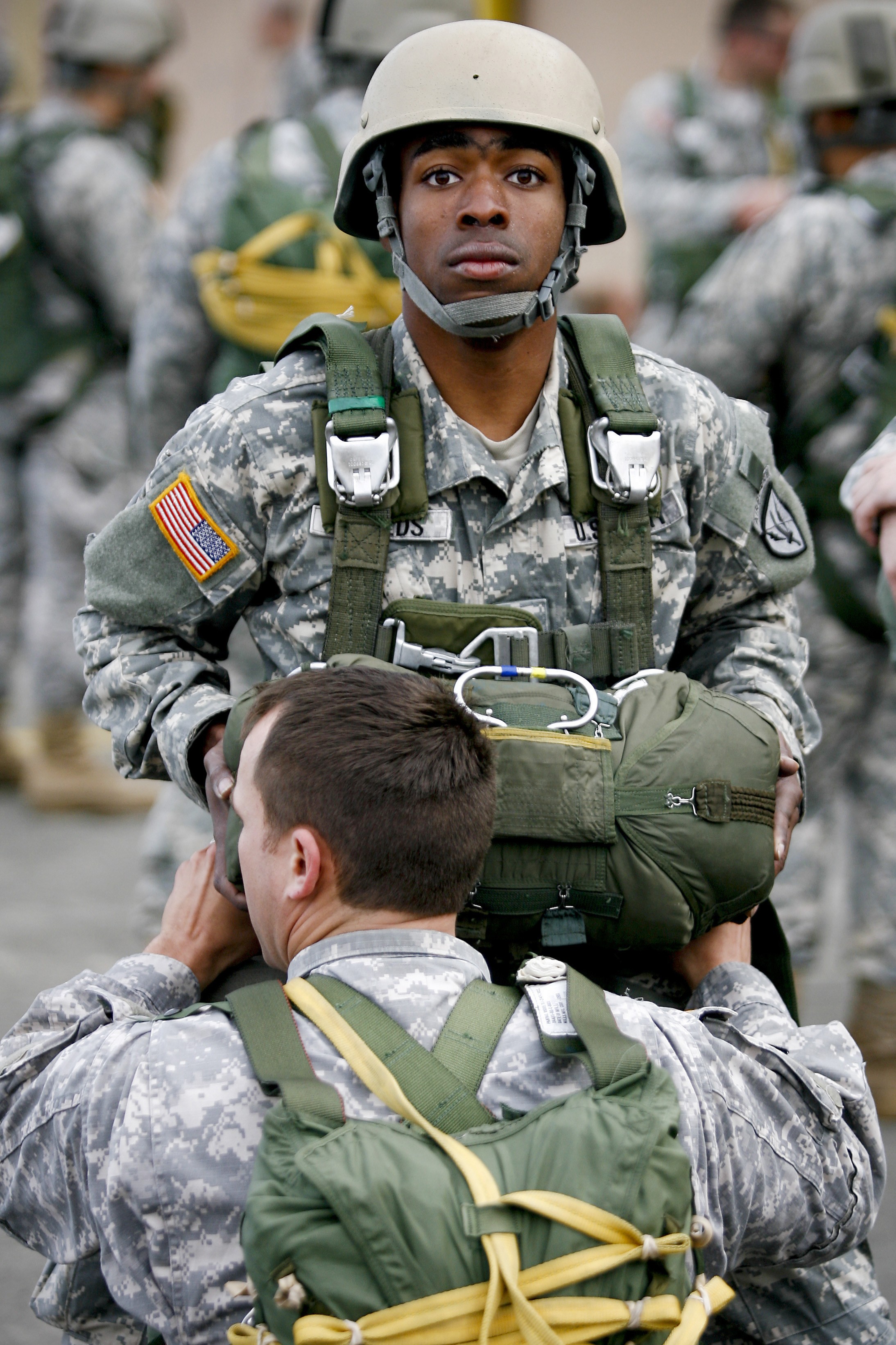
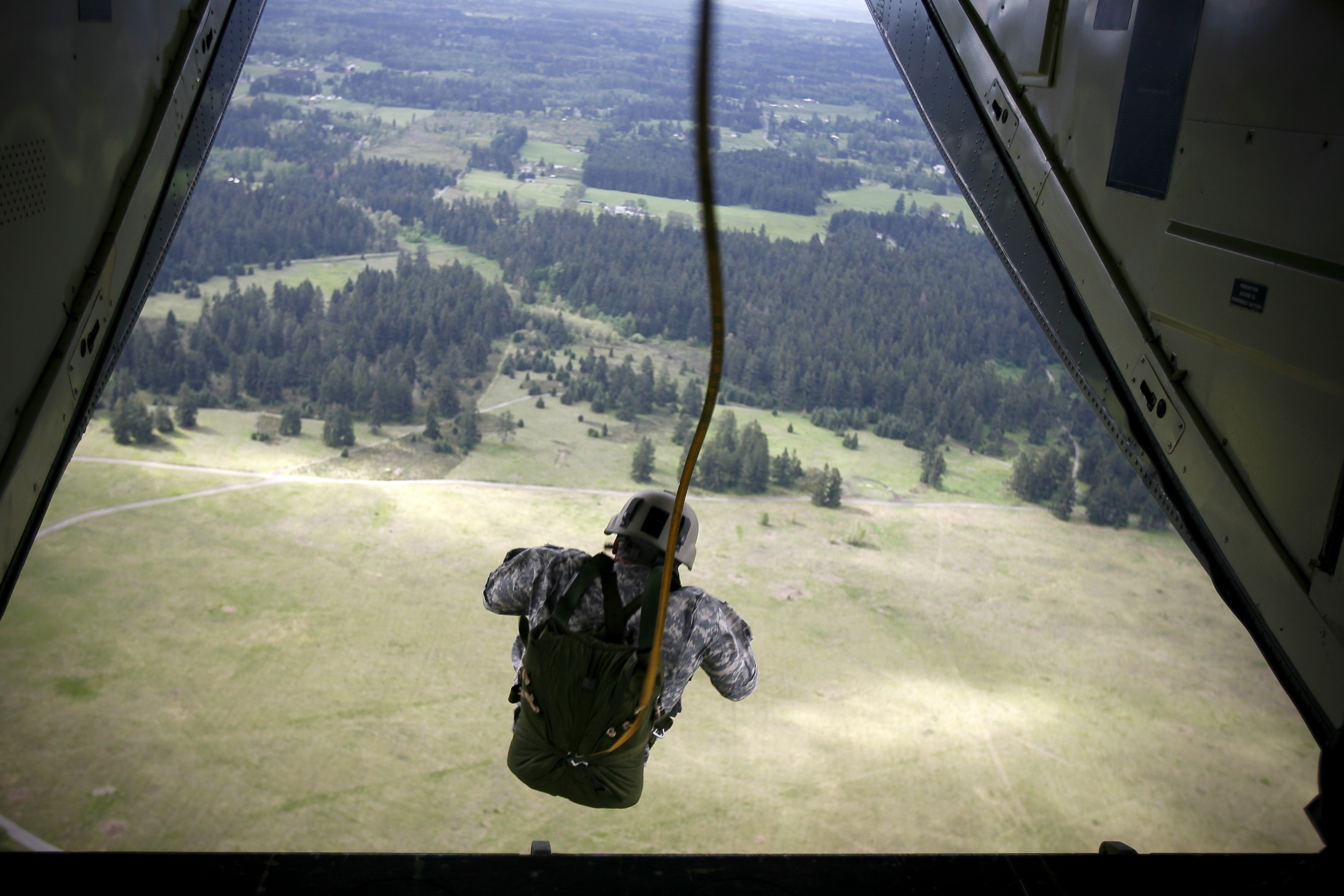
Social Sharing